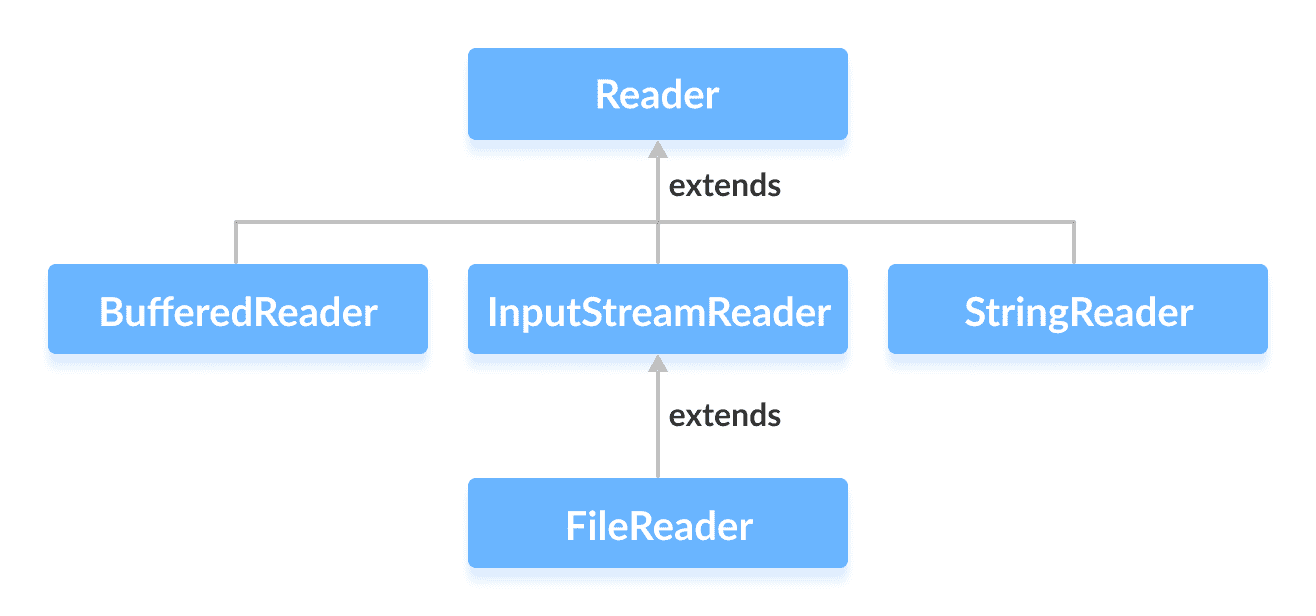在本教程中,我们将通过一个示例来学习 Java Reader,其子类及其方法。
java.io包的Reader类是代表字符流的抽象超类。
由于Reader是抽象类,因此它本身没有用。 但是,其子类可用于读取数据。
Reader的子类
为了使用Reader的功能,我们可以使用其子类。 他们之中有一些是:

在下一个教程中,我们将学习所有这些子类。
创建Reader
为了创建一个Reader,我们必须首先导入java.io.Reader包。 导入包后,就可以创建读取器。
// Creates a ReaderReader input = new FileReader();
在这里,我们使用FileReader类创建了一个读取器。 这是因为Reader是抽象类。 因此,我们无法创建Reader的对象。
注意:我们也可以从Reader的其他子类创建读取器。
Reader方法
Reader类提供了由其子类实现的不同方法。 以下是一些常用方法:
ready()- 检查读取器是否准备好阅读read(char[] array)- 从流中读取字符并将其存储在指定的数组中read(char[] array, int start, int length)- 从流中读取等于length的字符数,并从start开始存储在指定的数组中mark()- 标记流中已读取数据的位置reset()- 将控件返回到流中设置标记的点skip()- 从流中丢弃指定数量的字符
示例:使用FileReader的Reader
这是我们可以使用FileReader类实现Reader的方法。
假设我们有一个名为input.txt的文件,其内容如下。
This is a line of text inside the file.
让我们尝试使用FileReader(Reader的子类)读取此文件。
import java.io.Reader;import java.io.FileReader;class Main {public static void main(String[] args) {// Creates an array of characterchar[] array = new char[100];try {// Creates a reader using the FileReaderReader input = new FileReader("input.txt");// Checks if reader is readySystem.out.println("Is there data in the stream? " + input.ready());// Reads charactersinput.read(array);System.out.println("Data in the stream:");System.out.println(array);// Closes the readerinput.close();}catch(Exception e) {e.getStackTrace();}}}
输出
Is there data in the stream? trueData in the stream:This is a line of text inside the file.
在上面的示例中,我们使用FileReader类创建了一个读取器。 读取器与文件input.txt链接。
Reader input = new FileReader("input.txt");
要从input.txt文件读取数据,我们已经实现了这些方法。
input.read(); // to read data from the readerinput.close(); // to close the reader
要了解更多信息,请访问 Java Reader(Java 官方文档)。

